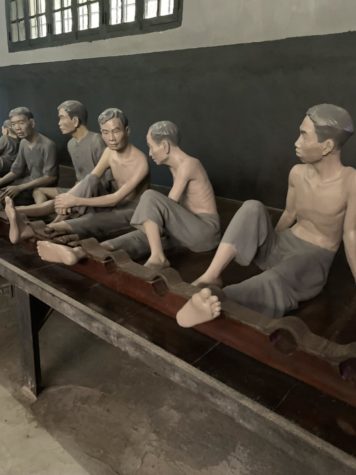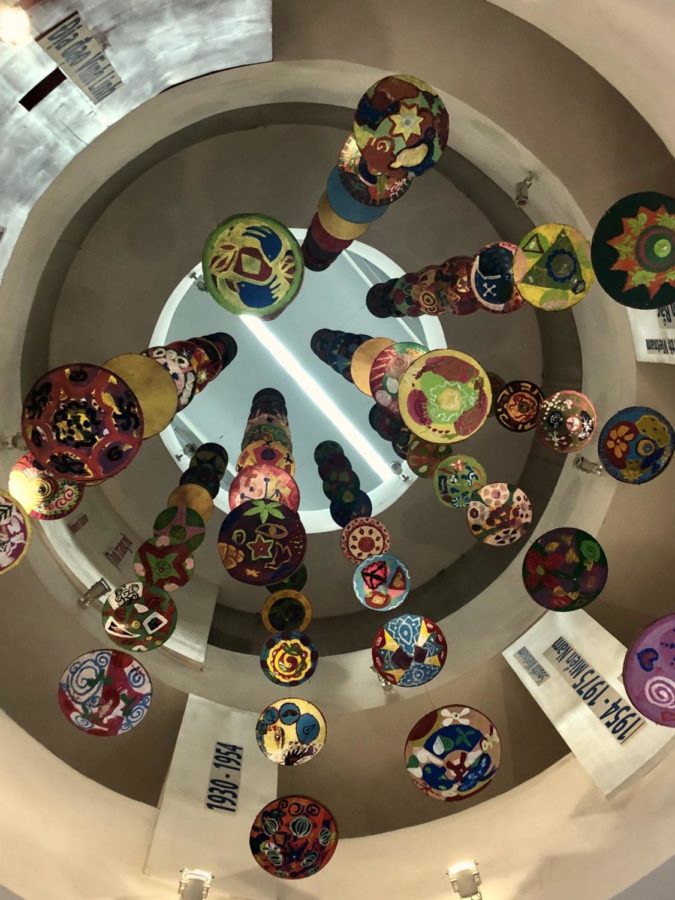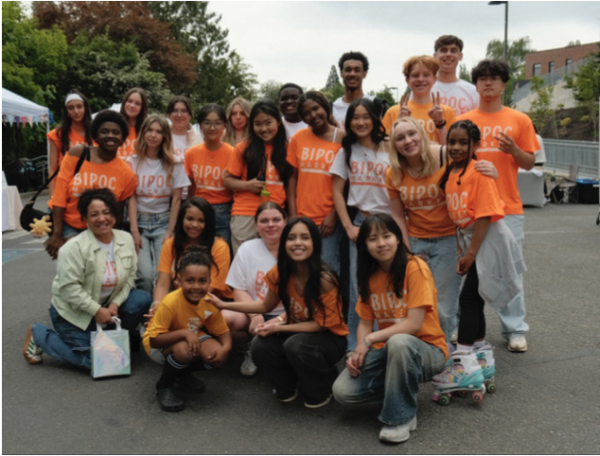Day 3: Hanoi
March 12, 2019
Bảo Tàng Phụ Nữ Việt Nam (the Women’s Museum)
by Chanthen Hong, Jade Cheatham and Julia Henning

The Bảo Tàng Phụ Nữ Việt Nam (Women’s Museum) was opened in 1995. It was founded by the Socialist Party of Vietnam in 1987 in conjunction with the Vietnamese Women’s Union to celebrate the contribution of women to the nation’s culture, diversity and society. Between 2006 and 2010, the museum underwent a series of renovations. Now the museum is home to more than 1,000 relics, photos and other materials that give an insight into the role of women in Vietnam. The stated mission of the museum is to “enhance public knowledge and understanding of history and cultural heritage of Vietnamese women, thus contributing to promoting gender equality.”
The museum has six levels. Each level focuses on a certain aspect of the life of a Vietnamese woman, which includes marriage, childbirth, family life, military, fashion, and modern stories. The museum displays artifacts such as clothing, jewelry, tools, and bassinets to help explain the role of women. There are also interactive opportunities for the museum goers, such as a tool to grind corn.
The presentation of the information in the museum was intriguing. We thought the museum would have a greater focus on the contribution and impact of women to areas such as the business, politics and human rights. The museum highlighted the expectations and roles of women in Vietnamese society in addition to details on the contribution of women, through work in the military, to the communist party.
Hoa Lo Prison
by YoungSeo Jo, Gabrielle Krieger and Samantha Salamone

Hoa Lo prison, or the Hanoi Hilton as it was sarcastically referred to by captured American soldiers, was built in 1901 by French Colonists to originally hold Vietnamese revolutionaries. The French used methods such as torture, beatings, food deprivation, and isolation to control the Vietnamese prisoners. Then, some sixty years later during the Vietnamese War, the the Vietnamese used the prison to hold American fighters who had been captured in war, enacting similar punishments. A notable prisoner of war was American Senator John McCain who spent five and a half years there.
A majority of the exhibition portrayed the brutal treatment of the Vietnamese political prisoners by the French colonists. We got a sense of the nationalistic pride that the Vietnamese government was trying to emphasize. The exhibitions depicted horrifying treatment of the prisoners, including life like plastic models of the prisoners that were shackled much like how they were more than fifty years ago. The museum also stressed how bonds between the prisoners allowed for heroic actions, such as planning revolutionary plots and escaping through a sewer. This heavy focus on the experience of the Vietnamese prisoners was unexpected because Americans know the Hoa Lo Prison more for its incarceration of American prisoners.
Exhibitions about the treatment of American soldiers and politicians during the Vietnam War appeared at the end of the museum.
These Americans, including former Senator John McCain, were systematically tortured, but pictures in the museum show American prisoners playing basketball and chess, feeding chickens, and laughing and smiling. The captions below these pictures explain what was happening in the picture and did not go into depth about anything else, and their the brutal treatment was nowhere depicted. The presentation in this section of the museum contrasted sharply with the American historical perspective, with an extreme nationalistic portrayal.










